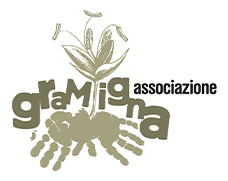EURECA
Good Practices
.jpg) Pictures:
Pictures:- Map of horticultural parks in Lisbon
- Hydroponic cultive in vegetable garden of public school
- Harvesting grapes in the municipal vineyard
- Pedagogical Farm
Lisbon Horticultural Parks *
Country:Main Subject:
Description:
At the end of 2023, the 24 vegetable gardens and farms of Lisbon occupied 16.4 hectares of the city area (10,005 hectares). In addition to these municipal spaces, there are small vegetable gardens in 70 public schools, with educational and community supply purposes, and in some cases with hydroponic cultivation.
Agriculture always existed in cities and in Lisbon there are reports of the existence of vegetable gardens and farms since Roman times. Since the middle of the 20th century, vegetable gardens have multiplied wildly due to the migration of rural populations to the capital and subsistence economy. The regulation of these spaces was imposed by the growth in real estate occupation of the urban territory and the need for planning. At the beginning of the 21st century, environmental concerns were added.
The 21 municipal vegetable gardens in operation (9.7 hectares) are divided into 850 plots for cultivation, which are allocated by public tender. The main criteria is the distance between the place where the citizen lives and the park, because vegetable gardens also have a community socialization function.
In addition to the vegetable gardens, agriculture in Lisbon includes a Pedagogical Farm (2 hectares dedicated to the connection between the countryside and the city), a 2 hectare vineyard (explored in partnership with a wine company), a 2.7 hectare orchard (explored in cooperation with the Monsanto Prison).
Many of Lisbon's arable areas are integrated into the surrounding spaces of the city green corridors, such as Parque do Zé Pinto, in Campolide, which has a biodiverse rainfed meadow, integrated into the Monsanto Green Corridor. Rainfed meadows are more ecological than grassy areas, as they do not consume irrigation water and are rich in vegetables that fix atmospheric nitrogen. There are already 5 hectares of rainfed meadows in Lisbon, contributing to the biodiversity and balance of the urban ecosystem.
Reference links:
https://www.lisboa.pt/cidade/ambiente/estrutura-ecologica/parques-horticolas
https://informacoeseservicos.lisboa.pt/contactos/diretorio-da-cidade/parque-vinicola-de-lisboa
https://www.lisboa.pt/atualidade/noticias/detalhe/pomar-no-monsanto-recebe-as-primeiras-arvores
https://quintapedagogica.lisboa.pt/
SDG direct/ indirect short justification:
Direct SDGs:
- SDG 12 Responsible Consumption and Production: Sustainable internal agricultural production for internal consumption with reduced ecological footprint.
- SDG 13 Climate Action: Citizen awareness and education for mitigation and adaptation to climate change and reduction of adverse impacts.
- SDG 15 Life on Land : Promoting the sustainable use of terrestrial ecosystems; preventing the loss of biodiversity.
Keywords:
City:
Questions:
- What are the possible purposes of vegetable gardens?
- What is the main criteria for a plot of cultivation to be allocated?
- What is the advantage of rainfed meadows when compared to grassy areas?
Additional comments:
* Horticultural Park – Set of urban gardens integrated into a homogeneous and delimited unit. It can consist of community and/or recreational vegetable gardens and also arboreal spaces.
Authors:
Edu.In




